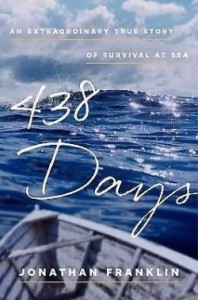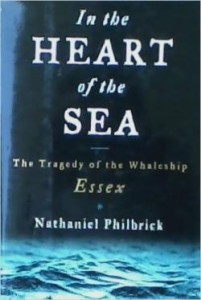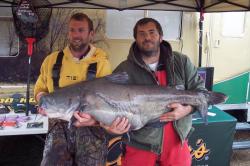U.S. Fish and Wildlife Service to Reclassify West Indian Manatee from Endangered to Threatened
(Editor’s Note: Not to say “we told you so”, but here’s the latest on the status of the manatee, from the U.S. Fish & Wildlife Service)
from The Fishing Wire
Endangered Species Act Protections Helped Rescue Beloved Southeastern Sea Cow from Brink of Extinction; Service will Continue to Lead Conservation Actions to Increase Species Population, Reduce Threats & Improve Habitat Conditions
MIAMI, Fla. – As a result of significant improvements in its population and habitat conditions and reductions in direct threats, the U.S. Fish and Wildlife Service (Service) announced today that the West Indian manatee is proposed to be downlisted from endangered to threatened status under the Endangered Species Act (ESA). The proposal to downlist the manatee to threatened will not affect federal protections currently afforded by the ESA, and the Service remains committed to conservation actions to fully recover manatee populations.
The ESA defines an endangered species as one currently in danger of extinction throughout all or a significant portion of its range, and a threatened species as one that is likely to become endangered within the foreseeable future. Given its review of the best scientific and commercial data available, including analyses of threats and populations, the Service proposes that the West Indian manatee no longer falls within the ESA’s definition of endangered and should be reclassified as threatened. The Service will publish its proposal in the Federal Register tomorrow, beginning a 90-day comment period during which the public is invited to submit scientific or technical information that will aid the agency in reaching its final decision.
“The manatee is one of the most charismatic and instantly recognizable species,” said Michael Bean, Principal Deputy Assistant Secretary for Fish and Wildlife and Parks at the Department of the Interior. “It’s hard to imagine the waters of Florida without them, but that was the reality we were facing before manatees were listed under the Endangered Species Act. While there is still more work to be done to fully recover manatee populations, their numbers are climbing and the threats to the species’ survival are being reduced. Today’s proposal is a positive step that recognizes the progress citizens, conservation groups, the State of Florida, the Commonwealth of Puerto Rico, and our own Service employees have made working together.”
The manatee protection measures currently in place would remain in force if the species is downlisted from endangered to threatened. These measures by the Service, the Florida Fish and Wildlife Commission, the Commonwealth of Puerto Rico, other state and federal agencies, and industries resulted in the establishment of over 50 manatee protection areas and have played a key role in reversing the species’ decline. Retrofitted water control structures have resulted in significant decreases in manatee fatalities, and power companies are working cooperatively with federal and state conservation managers to address warm water outflows at wintering manatee congregation sites. Florida counties have made significant progress in developing and implementing manatee protection plans and siting boat facilities to reduce boater impacts on manatees.
The Service works with the Coast Guard to enforce manatee protection areas and minimize collisions with high-speed boats. Significant advances have also been made in reducing the threat from entanglement in fishing gear. Additionally, manatee rescue, rehabilitation and release organizations help save dozens of manatees yearly, with a majority successfully released back into the wild.
Today, the range-wide minimum known population is estimated to be at least 13,000 manatees, with more than 6,300 in Florida. When aerial surveys began in 1991, there were only an estimated 1,267 manatees in Florida, meaning that over the last 25 years there’s been a 500 percent increase in the species population in that state.
“The manatee’s recovery is incredibly encouraging and a great testament to the conservation actions of many,” said Cindy Dohner, the Service’s Southeast Regional Director, in conjunction with an event at the Miami Seaquarium to announce the Service’s proposal. “Today’s proposal is not only about recognizing this progress, but it’s also about recommitting ourselves to ensuring the manatee’s long-term success and recovery.
“As part of its balanced approach to the recovery of the manatee, the Service recognizes that even as it proposes to update the manatee’s status under the ESA with this proposal, it may at times need to strengthen protection for the species in specific local areas,” Dohner added. “For example, the Service is reviewing comments on a proposal to establish greater protection for manatees at Three Sisters Springs, which is part of the agency’s Crystal River National Wildlife Refuge north of Tampa, Florida.”
The manatee also remains protected under the Marine Mammal Protection Act.
Today’s action follows an extensive review of the threats the species faces, and the conservation actions put into place to help recover the manatee. The proposal relies on the most recent science and recommendations from a 2007 West Indian Manatee Five-Year Status Review. It also serves as a 12-month finding in response to a petition filed by the Pacific Legal Foundation and Save Crystal River, Inc. In its review, the Service considered the status of the West Indian manatee throughout its range. West Indian manatees are found in the southeastern United States, Puerto Rico, Mexico, Central America, South America, and Greater and Lesser Antilles.
The finding and additional information is available online at the Federal eRulemaking Portal: www.regulations.gov. In the Keyword box, enter Docket Number FWS-R4-ES-2015-0178. Background information on the Florida and Antillean sub-species is available at www.fws.gov/southeast/wildlife/mammal/manatee.
To ensure the Service’s review is complete and based on the best available scientific and commercial information, the Service is requesting information concerning the status of the West Indian manatee throughout its entire range (see range map). Specifically, the Service seeks information on the manatee’s biology, distribution, abundance, population trends, demographics and genetics; habitat conditions; the threat posed by climate change; past and ongoing conservation measures that have been implemented for the species, its habitat or both; threat status and trends within the geographical range; and a wide variety of other information.
Public comments on this proposal can be made until April 7, 2016. To learn more about how to submit comments as well as locations for future public hearings on the proposal, see Frequently Asked Questions.
The ESA plays a critical role in conserving and recovering our most at-risk wildlife, and has prevented the extinction of 99 percent of the species originally listed as threatened or endangered. Listing a species such as the manatee brings worldwide attention to its plight and drives coordinated conservation efforts across a range of potential partners. The ESA also provides crucial conservation funding for recovery efforts to reduce threats, protect and restore habitats, and increase populations.
The mission of the U.S. Fish and Wildlife Service is working with others to conserve, protect, and enhance fish, wildlife, plants, and their habitats for the continuing benefit of the American people. For more information on our work and the people who can make it happen, visit www.fws.gov.










